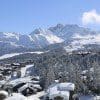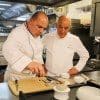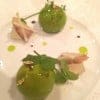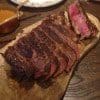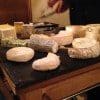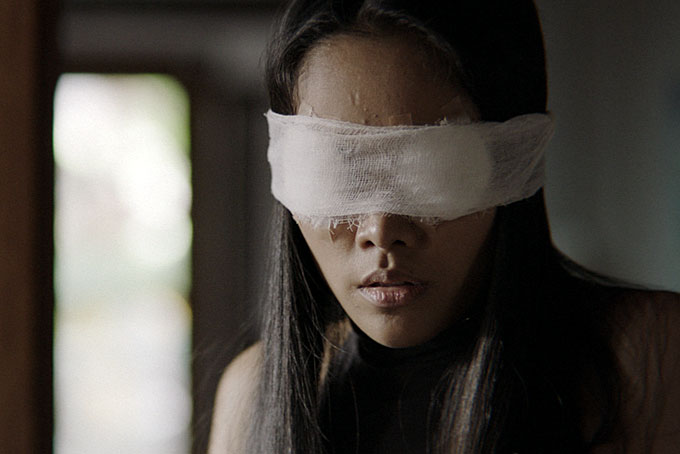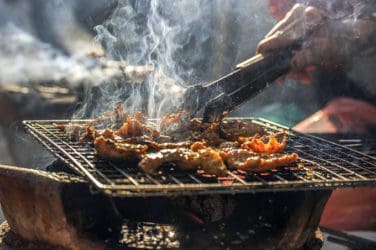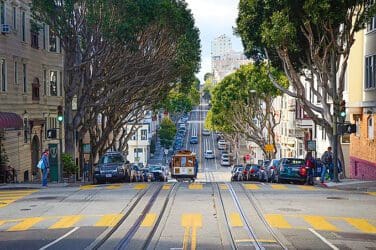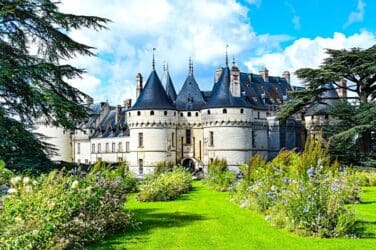Words: Will Squires
At age twenty-three, I spent a year living in Whistler, the jewel in North America’s skiing crown. I lived on a diet consisting primarily of reduced-price blueberry muffins, staff-subsidised burger meals and box-mixture pancakes. As a food snob, this was a difficult time, exacerbated by the lack of useful cooking equipment and the distinct lack of anything resembling a quality restaurant. So bring on a trip to Courchevel, France, where stylish skiing meets incredible food.
Whistler is littered with the worst faux pas’ of American cooking. Bottomless chicken wings, bargain basement pizza slices, and somewhat futile attempts at ‘luxury’ cuisine, including a Teppenyaki grill staffed exclusively by Australians who called you ‘brah’. As we drove through the towering mountains towards Courchevel for a food-focused expedition, my previous experiences of skiing resorts caused me to feel a sense of trepidation.
Part of Les Trois Vallées, the largest linked ski area in the world, Courchevel is actually a series of tiny villages nestled within the depths of the Tarentaise Valley. Identified primarily by their altitudes, 1300 (Le Praz), 1550 (Courchevel Village), 1650 (Moriond) and 1850 (Courchevel), they represent the entire gamut of the ski experience.
Famed for its reputation as the Saint Tropez of the snow, Courchevel’s winter hosts Russian oligarchs, A-List celebrities, heads of state, and probably a respectable percentage of winter honeymooners. This is a town where you can pay extra for “Eau ambien”, more commonly known as room-temperature water. Any frippery, any decadence, any vague homage to Dionysus is available for the right price to the right individual. This is not a town that lauds chips and cheese (at least not together).
Home to eleven Michelin Stars spread over seven restaurants, and an astounding selection of luxury hotels, including two ‘Palaces’, a new 6* ranking introduced by the French to satisfy even the pickiest of oligarchs. I could almost forgive you for closing this article, shaking your head at the presumed cost, and immediately navigating to find cheap flights to Borovets. But I urge you to read on, for within the gilt palaces of Courchevel 5 star hotel food, there exists some of the most exquisite dining you’ll find anywhere in the world, let alone a ski town, and some phenomenal bargains to get your cutlery into.
We’ll start with Le Chabichou; named affectionately after the original maître d’s cat. Nestled into the lee of the mountain, resembling nothing so much as an elaborately ribboned chocolate box, the entire hotel has the appearance of having grown outward, organically, piece by piece.
Beautifully adorned, with rich, leather upholstery, weathered wood, and a feeling of mountain-blessed timelessness, Le Chabichou Courchevel has expanded over the years from an extended barn to its current sprawling manse. At the heart of its success however is the eponymous restaurant. Helmed by the resolute duo of Michel Rochedy and Stéphane Buron, Le Chabichou was the first hotel to truly bring the ‘nouvelle cuisine gastronomique’ to Courchevel.
The ‘nouvelle cuisine’ is variously attributed to several pivotal food critics and chefs from the 1960s, but none more so than Paul Bocuse. A response to the obsession with classic French methodologies, perpetrated by a string of Cordon Bleu graduates and their perpetual offspring, and a rising tide of regional European cuisines attempting to challenge the old French hegemon, the new revolution was a way of stepping back, surveying the horizon, and resettling. Exciting and experimental, it was built upon the idea that food was a sensory experience, and that every mouthful should be more than a mouthful; an idea, a sensation, surprise. It’s most famous proponent in our fair isles is possibly the Fat Duck’s Heston Blumenthal, famed for fanciful sweet shops and edible cutlery, yet it is in the heart of France where this philosophy gained its precision and poise. While classical French cuisine was often heavy and rich, ‘nouvelle cuisine’ was light, considerate, and focused around fabulous produce, most notably that of France’s historical Rhône-Alpes, where Paul Bocuse is still revered.
Le Chabichou will put the majority of food you have eaten in your life to shame. The highlight is the savoie apple; a glazed, flawlessly formed example of technical craftsmanship that hides a core of decadently rich foie gras, a single flecked gold leaf marks the delicately simulated stem. The flavour is almost absurd; a thunderbolt of sharp savoie cider, heightened with a drop of apple vinegar, awakening your palate, before the foie gras slowly begins to lose its structure, melting silky across your tongue, enrobing it within metaphorical satin bed sheets. I sit forlorn for a moment as I gaze at my plate, the garnish still remaining, a small cross of eel and apple, propped like a resolute tribute to a fallen soldier.
The rest of the meal follows in similar suit. A smooth sorrel pearl explodes in your mouth in an abundance of vegetable umami. Preserved pork breast nestles up against chestnut-stuffed cabbage, a thin slice of golden crackling a fitting crown. A macaroon that deserves an article of its own.
Yet my abiding memory of the two Michelin-starred Le Chabichou will always be the simple, perfectly executed butter. Churned in Saint Malo on the coast of Brittany, delicately smoked, and seasoned with the finest salt, it is perhaps this that gives the best insight into the food of Courchevel, and the wider surrounding area including Lyon.
The produce sampled and shared here is beyond comparison, sourced from the breadth of France, and curated by the most careful of masters. I think of that butter whenever I press my thumb through the golden crust of a baguette, wistfully reaching for the Lurpak or Kerrygold. Sometimes it is the simplest things in life that are the most precious.
This reverence for food is reflected across the board. In the beautifully appointed Hotel Le Portetta’s restaurant, adorned with an entire taxidermy museum full of stuffed animals (including a towering bear, which I’m informed has been packed away into the attic for terrifying children), the menu is curated by Angela Hartnett (of Café Murano fame). For a terribly reasonable price (20€ for the large plate at time of publishing), you can enjoy agnolotti stuffed with guinea fowl, dressed delicately with a sage butter, could almost you weep for joy.
The pizza (served out on the deck, best accompanied by a cold beer) is equally reasonable. Light, Neapolitan style dough, wrought with cavernous air pockets that would make Paul Hollywood proud, provides a simple canvas to splatter with the paint of the vivid local produce. The service is cosy and convivial, and we curl up by a roaring fire afterwards, somewhat taken aback by the scale of the cheese board on offer.
For ski-in, ski-out luxury, and every whim catered to. The 5* Hotel La Sivolière (French for Little Forest) feels like the sort of hotel that James Bond would rest his head in. The staff are unfailingly present (and never a hair out of place), with a slightly villain-esque uniform of grey turtlenecks, yet it’s the smallest touches that turn this from feeling overbearing to comfortable. Warm hand towels are piled in the bathrooms, the barman’s sincere effort to get to know you by name upon arrival. The rooms are predictably luxurious, but the balcony wrapped around my room feels like a private paradise; poised and pointed into a secretive glade.
For real value, ski down from the lofty heights of 1850 into cozy Courchevel Village, and tiptoe in to the cosy, tightly clustered tables of L’Azimut. For the price of just 28€, you can dine in Michelin-starred conviviality. The walls are adorned with old photographs of chefs, beloved patrons, and the innumerate awards bestowed upon L’Azimut. The highlight is a beautiful arctic char from a local lake. Beautifully delicate, it tumbled beneath the weight of my cutlery, offset by a piece of pungent Morceau sausage.
It would be easy to paint an infinite number of pictures of Courchevel. To some, this is the heart of decadence; a way to disappear into a corner of the world that is defined by table service, where every whim fed and fettered. For others, it is an almost holy place. Head Chef at Le Portetta, Henri Dereani, climbs into the mountains during the summer to gather wormwood to make his own génépi (a local schnapps). Michel Rochedy spends his free time making phenomenal confiture. Gaëtan Bouvier, the Head Sommelier at the gorgeous Villa Florentine in Lyon waxes lyrically for ten minutes about local champagne he discovered, his close relationships with the farmer a source of clear devotion. This reverence is distilled in every restaurant, in every plate of food. Superficially Courchevel may be a ski town, there’s the Courchevel mammoth too, and Courchevel poker, but I would be happy to merely waddle from artist to artist, contentedly full, marvelling in their genius.
words: Will Squires
Rail travel
- Fares from London to Lyon start at £89.00 standard class return. Fares from London to Moutiers start at £111 standard class return. All fares are per person and subject to availability. For bookings visit European rail experts voyages-sncf.com or call 0844 848 5848
Courchevel Travel
- http://www.courchevel.com/
For more information about the French mountains, see en.france-montagnes.com


